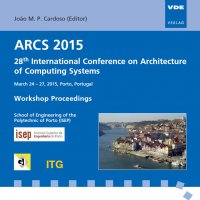Runtime Self-Integration as Key Challenge for Mastering Interwoven Systems
Conference: ARCS 2015 - 28th International Conference on Architecture of Computing Systems
03/24/2015 - 03/27/2015 at Porto, Portugal
Proceedings: ARCS 2015
Pages: 8Language: englishTyp: PDF
Personal VDE Members are entitled to a 10% discount on this title
Authors:
Haehner, Joerg; Tomforde, Sven (University of Augsburg, Germany)
Brinkschulte, Uwe (University of Frankfurt, Germany)
Lukowicz, Paul (Technical University Kaiserslautern, Germany)
Mostaghim, Sanaz (University of Magdeburg, Germany)
Sick, Bernhard (University of Kassel, Germany)
Abstract:
Many of today’s technical systems are of tremendous complexity that evolves over long periods of time. Today, they are no longer isolated entities but more and more interfere with each other. In this article, we address challenges related to socalled Interwoven Systems. That is, we address the controllability and manageability of connected or coupled systems that were initially not meant to interact with each other. The general idea is to develop new methods for managing integration of elements, which may be composite systems themselves, based on a novel understanding of how systems can co-exist within the overall Interwoven System. This means that the integration is moved largely from design-time to runtime and to the responsibility of the systems themselves. We will refer to this aspect as selfintegration. The most important aspect in this context is the development over time throughout the complete life-cycle of an element in an Interwoven System: from the creation to the continuous interweaving process to the disintegration.


